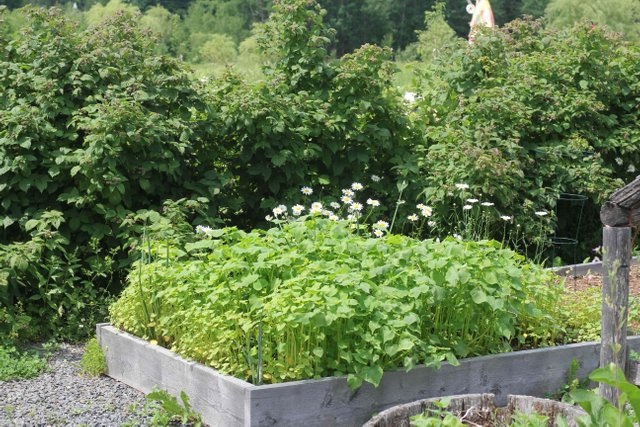Fall weather is still warm enough to sow over-winter ‘cover crops’, which restore fertility and humus, and enrich the soil for planting next spring. Cover crops are tilled under in late winter or early spring. The soil level in the garden usually drops about 3 – 4” in each bed after the vegetable crops are harvested. This is a visible proof that growing a food crop consumes considerable organic matter.
Cover crops, for example, fall rye, crimson clover, buckwheat and others are anything but difficult to grow. At the point when they are processed by soil microorganisms they reestablish organic matter and nutrient levels in the dirt.
Since they are planted thickly, they additionally help in controlling weeds. Cover crops also control disintegration from overwhelming winter rains, and help keep the dirt from compacting over winter.
Depending on your growing region, some cover crops will die during the coldest climate. However, the crop residue is still a valued supplement in the spring.
What cover crops should you plant?
- Hardy legumes
These nitrogen-fixing crops provide a fertilizer as well as organic matter. Planted in fall, they grow slowly until late winter when growth speeds up. Legume crops may not mature until May in some regions. Cut down these cover crops in spring before they go to flower, then till them under.
Hairy vetch (Vicia villosa): Grows to 2 feet high; hardy to -15° F. Hairy vetch is considered the hardiest annual legume. Vetch tolerates poor soil, and matures late. Sow 1 to 2 pounds per 1,000 square feet.
Field pea (Pisum arvense and P. sativus): Grows 6 inches to several feet tall. Field peas are hardy to 10 to 20°F. ‘Austrian Winter’ pea is low growing and late maturing. ‘Magnus’ grows to 5 feet. Sow 2 to 4 pounds per 1,000 square feet.
Berseem clover (Trifolium alexandrinum): Grows 1 to 2 feet high. Berseem clover is hardy to 20° F. Produces high amounts of nitrogen. Sow 2 pounds per 1,000 square feet.
Crimson clover (T. incarnatum): Grows 18 inches high, and is hardy to 10° F. Crimson clover matures late and fixes less nitrogen than other clovers. Sow 1/2 to 2 pounds per 1,000 square feet. If allowed to go to seed, Crimson clover can become an invasive weed.
- Grasses
Cover crops from the grass family grow quickly, tolerate cold, and improve the structure of compacted soils. Thickly sown grasses add increased organic matter in comparison to legumes. Grasses also control erosion which is a real benefit in wet regions.
Grasses do not have the benefit of fixing nitrogen as legumes do. Annual grass cover crops are cut down or mowed in spring before seeds set, and then tilled under.
Annual ryegrass (Lolium multiflorum): Grows 2 to 3 feet high; hardy to -20° F. Fast growing and tolerates flooding. The seeds are inexpensive, and the grass is very hardy. Ryegrass can become weedy. Sow 1/2 to 2 pounds per 1,000 square feet.
Winter rye (Secale cereale): Grows 4 to 5 feet tall; hardy to -30° F. Best grass for cold winter climates: tolerant of low fertility, acidic soils. Sow 2 to 3 pounds per 1,000 square feet.
Oats (Avena sativa): Grows 2 to 3 feet tall: hardy to 10 to 20° F. Produces the least organic matter of grasses, but is tolerant of wet soils. Oats usually succumb to winterkill, but the residue is still beneficial to the soil. Sow 2 pounds per 1,000 square feet.
Barley (Hordeum vulgare): Grows 2 to 3 feet tall; hardy 0 to 10° F. Fast maturing and tolerant of dry and saline soils: intolerant of acidic soil. Sow 2 to 3 pounds per 1,000 square feet.
To plant cover crops, sow seeds at least 30 days before the first expected fall frost date in your growing region. For cover crops that are only marginally hardy in your area, push back the sowing date to 60 days before the first frost. The more established a cover crop is before winter the more likely it will overwinter successfully.

